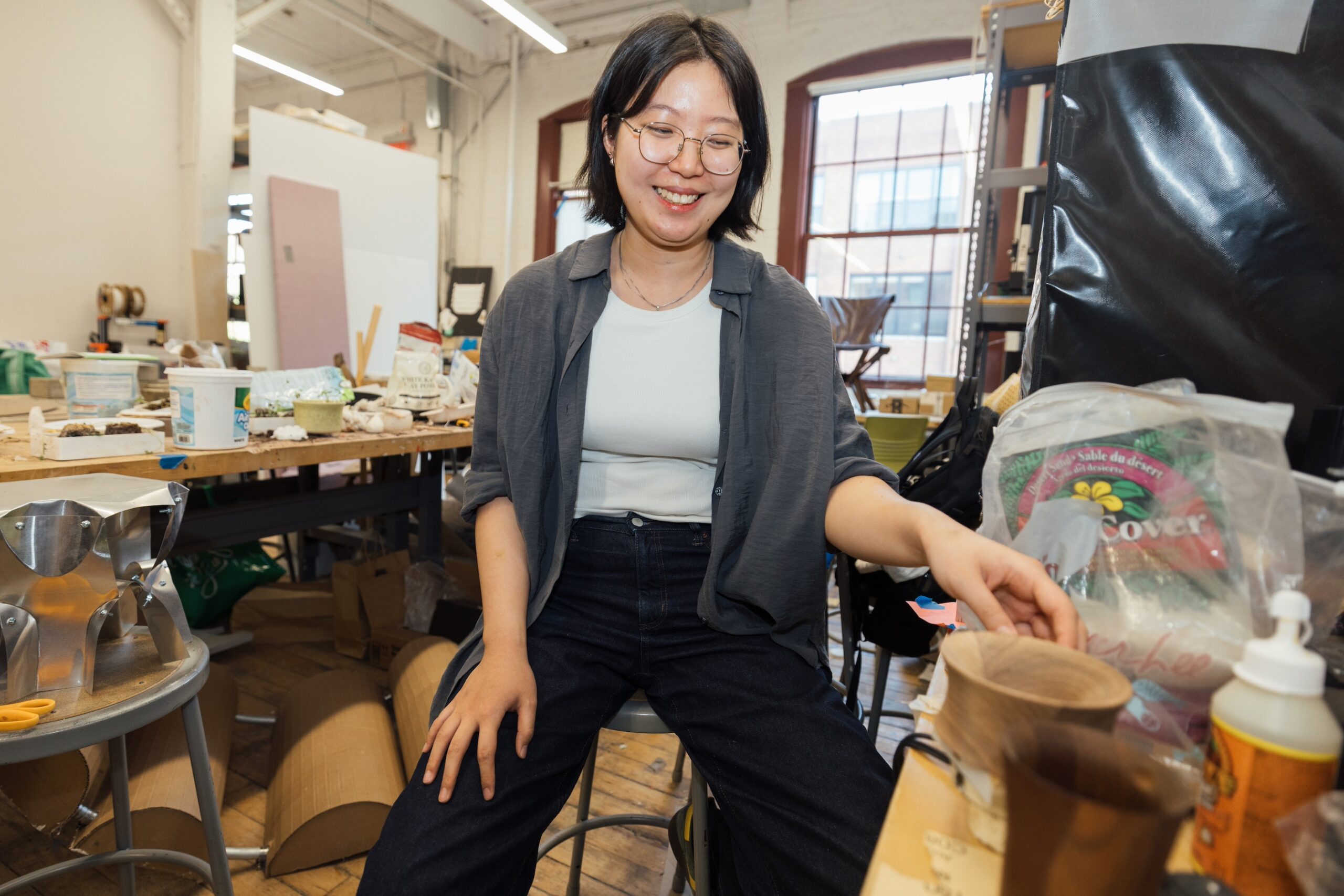This story is from Prattfolio’s feature “Mill, Melt, Press, Shape,” on students working across mediums in Pratt’s shops and labs.
Prattfolio visited Chanbin Im, BID ’25, one afternoon in her studio, just after she had been working in the School of Design’s CNC Lab milling foam for a chair prototype. Im, who came to Pratt for its industrial design tradition, has used her love of making and tools as a jumping-off point into all kinds of fabrication. She has been a student monitor in the Foundation and School of Design woodshops for much of her time at Pratt and in her own work often combines a number of fabrication techniques in a single project.
How did you get interested in industrial design?
I was interested in tools and hardware when I was in high school. I thought they looked pretty as is. My sister Jeongbin was studying industrial design at Pratt at that time, so I was aware of the industrial design field, and I thought my interests aligned with it. Industrial design is very broad, so I knew I could do whatever I wanted. I was also interested in fashion, the hardware part of it. Industrial design allowed me to combine fashion studies with industrial design projects. These freedoms made me get interested in industrial design.

You’ve really branched out. Have you found yourself gravitating toward certain ways of making as you’ve gone through Pratt?
Yes! So, can I show you my capstone project? [A slipper prototype.] It incorporates a 3D-knitted textile and a CNC-milled cork sole. I’ve been studying 3D-printed textiles recently because this topic touches both industrial and fashion design. So I was gravitating toward exploring 3D-printed textile techniques, and I found a technique called CNC knitting. I really wanted to apply it to my project, and I did! This part [the upper of the shoe] is 3D knitted.
To be more specific, I think this project used the most technology at Pratt: The cork sole was CNC flip-milled—which was a new attempt for the CNC Lab. Christian [Adamik] and Mauricio [Tacoaman] helped me a lot. For the CNC knitting, it was Tracey [Weisman] in the Knit Lab who helped. The upper knit with all these tunnels was also a new attempt for the lab.
What sort of things are you looking at, or what’s really inspired you?
I think patterns and tessellations inspire me the most. I like to find out functions that are naturally created by different patterns.
I’m currently taking Biocentric as my capstone studio—it’s about designing things that connect with nature. [My capstone project] is about sustainability, textiles and a tactile, sensorial kind of experience. The key point of this project is in this insole pattern. I like using patterns. The curves are inspired by the pattern of the sand surface, like a sand dune. [The insole] is actually filled with sand.
The pattern allows sand to create a dome shape, which creates pressure points for the feet. I was thrilled when I figured out that this pattern from nature also provides functionality. In the future, I want to deep dive into more of these findings.
(Check out more about Chanbin’s Capstone project Bare with Nature.)
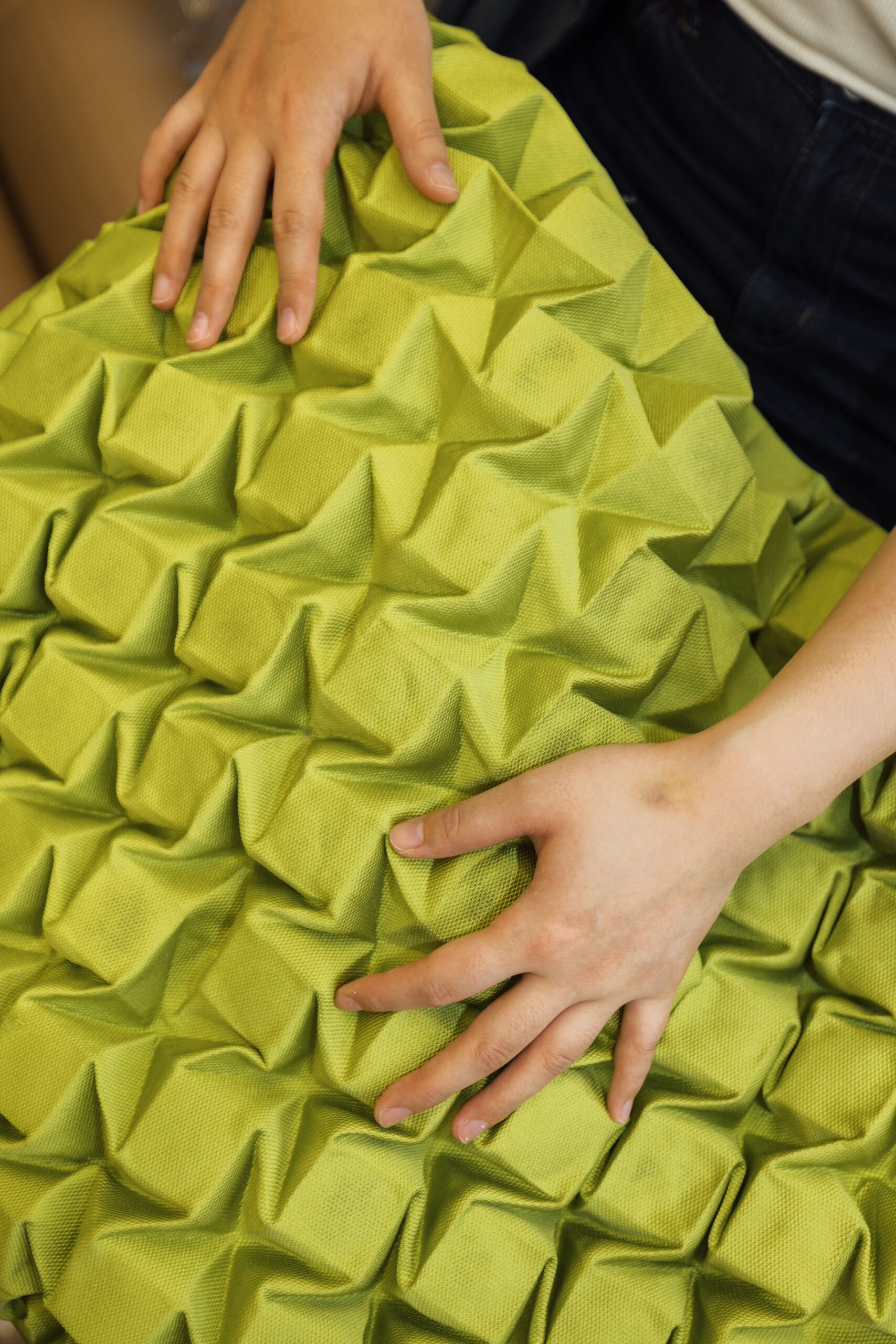
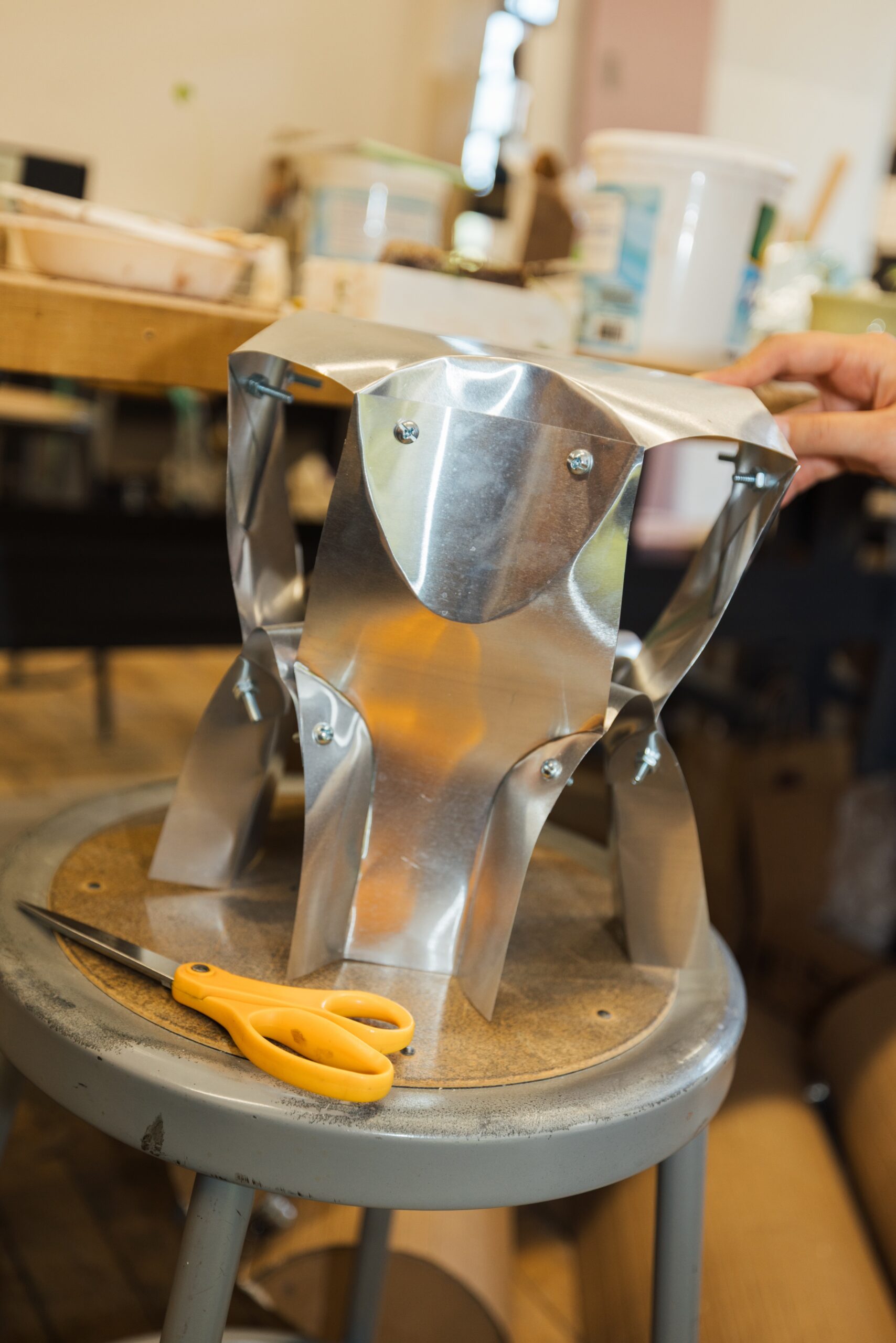
Let’s look at some of your other work.
I wanted to show you this chair experiment I did last semester in my furniture studio. I like it because I learned this technique in the Space, Form, Process class in my Foundation year. This is just bent sheet metal pieces connected with bolts and nuts. However, this simple bending gives a structure and aesthetic, showing potential to be real furniture. I am attached to this prototype. It shows how a raw material can perform differently and inspire thousands of different designs.
Do you have a favorite tool, technique, or machine?
Since I used it most recently, the CNC knitting machine is my favorite. I believe it’s kind of the most high-tech machine I can access in school. In the woodshop, I love this wood-turning tool, the lathe. I can make something look like a finished piece. And it’s fun and meditative to carve out the wood.
For techniques or skills, I’m really into folding origami tessellations. This is closely related to the idea of a pattern that provides functions.
Is there an experience you’ve had in the shops that’s taken you in a direction you didn’t expect?
I’ve been working as a student monitor in the Foundation woodshop for almost four years, and in the School of Design for three years. Since I’ve learned all the tools and machines in the shop, it has opened my mind to making and designing. What I mean is that students tend to make something that they can make . . . so knowing lots of skills widened my choices.
Like the knitting machine—it’s something that I can’t do with my hand. For the CNC [pieces], that’s also the same; you can 3D model it, and then you can let the machine do it for you. However, I still like a hands-on approach, like cutting wood, making plaster molds, etc., because it helps you to understand the fundamental aspects of design.
At Pratt, we take many hands-on approaches. We make more physical prototypes than CAD models. I think we’re more into crafting.
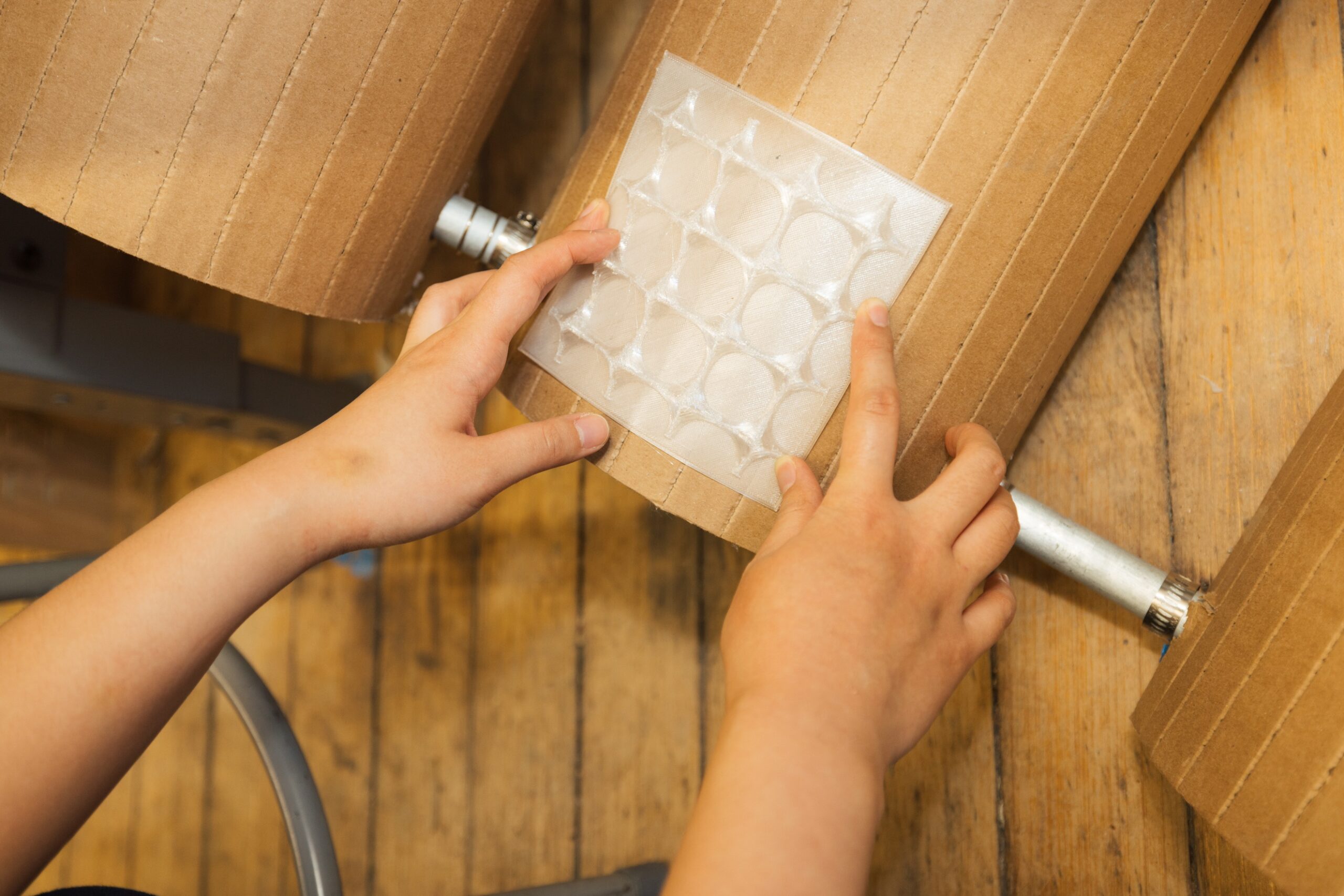
Oh! There’s one thing I’ve done, which I don’t have here, but I’ve melted plastic bottle caps as material for a chair. For this chair, I was in the plastics room for like five weeks. There’s a big oven, and I made a mold and melted plastic bottle caps I’d collected. Because of this exercise, I was able to fully understand the characteristics of the PP and PET plastics, and know what to consider during plastic waste recycling.
(Check out Chanbin’s project Beachair.)
Do you have any advice for students who are navigating the shops for the first time?
I’ve gotten to experience things differently because I’ve been working in the woodshop for a long time. Not knowing how things are built limits your design, but even being in the shop, watching how other students are working, will teach you how to make things.
It was my first time using CNC last semester, which was pretty late to explore. I think it’s better to experience earlier, so that you know all the resources you have in school. And you’ll have more options for generating your ideas.
Get to know the technicians, ask a lot of questions. Stack up your experience until senior year, and then use all your knowledge in your thesis projects.
The reason I’ve been taking a knitting class, learning more CNC, working in the woodshop, putting my feet in many areas, is to make the best result out of the resources at Pratt. So I think at least a little bit, getting experience with some of these techniques will be really helpful later, not only for your school projects, but also for the future. The only thing I regret is not taking a metal class!
I believe school is a preview of the professional world we’ll experience as designers. I hope every student enjoys and learns through the incredible faculty, staff, and inspiring colleagues and peers at Pratt.
Photos by Dahlia Dandashi
Related Reading & More
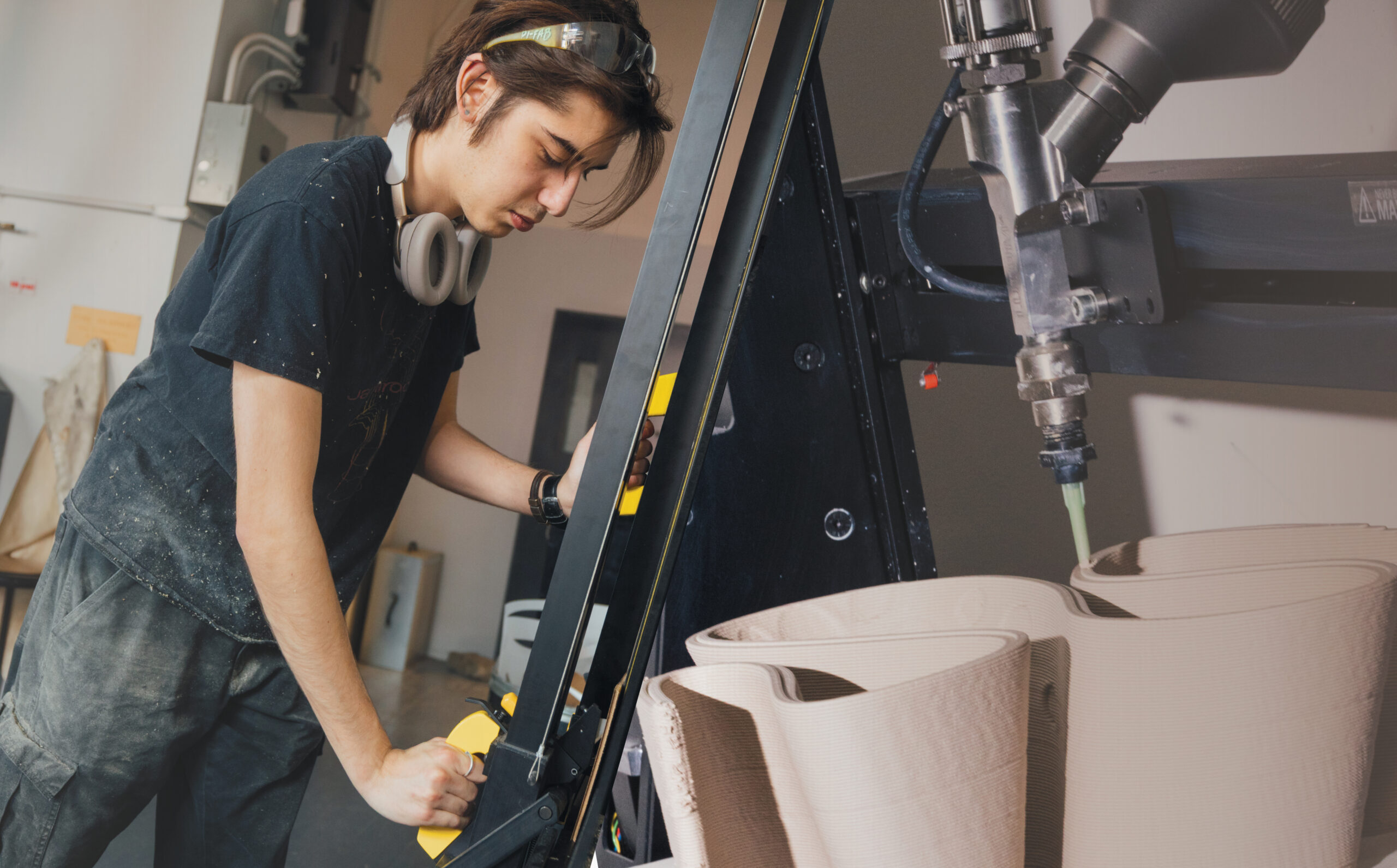
Mill, Melt, Press, Shape
Prattfolio Story
